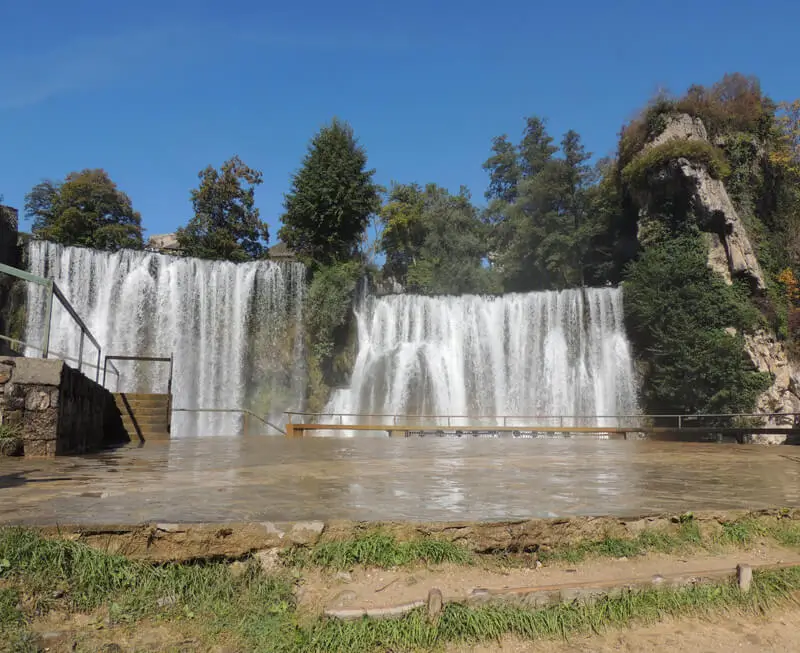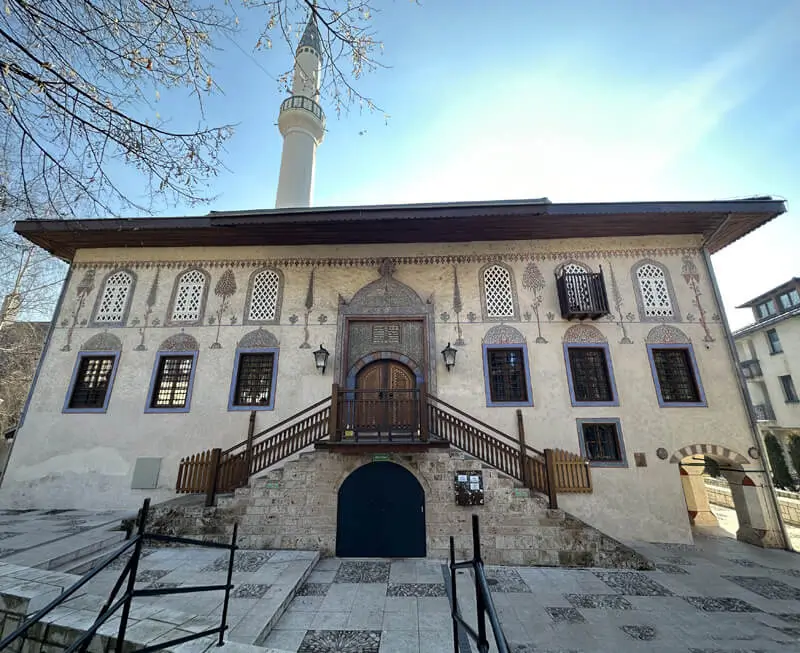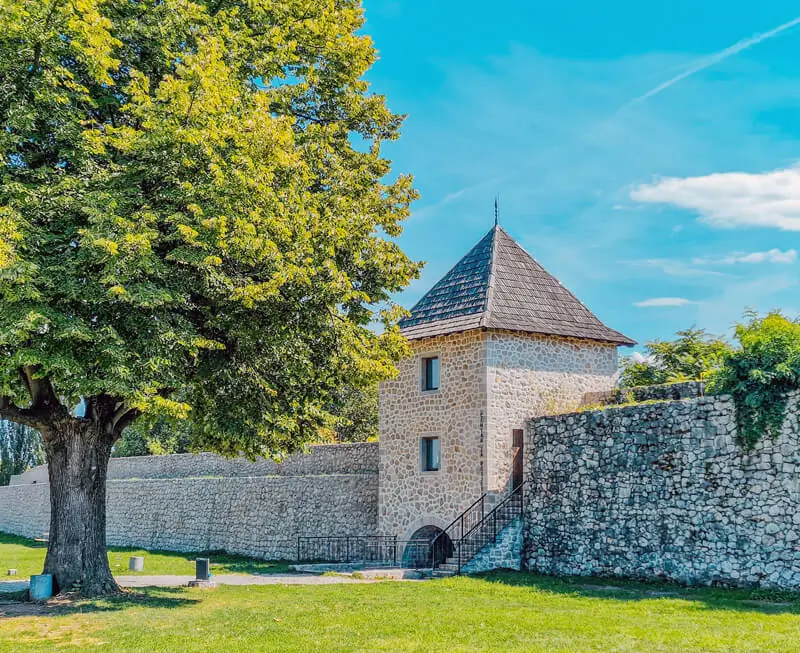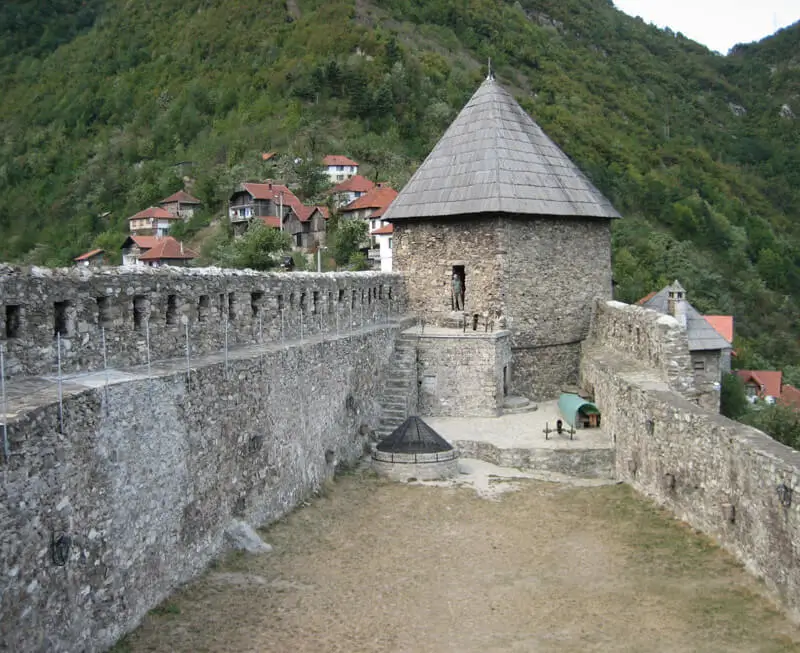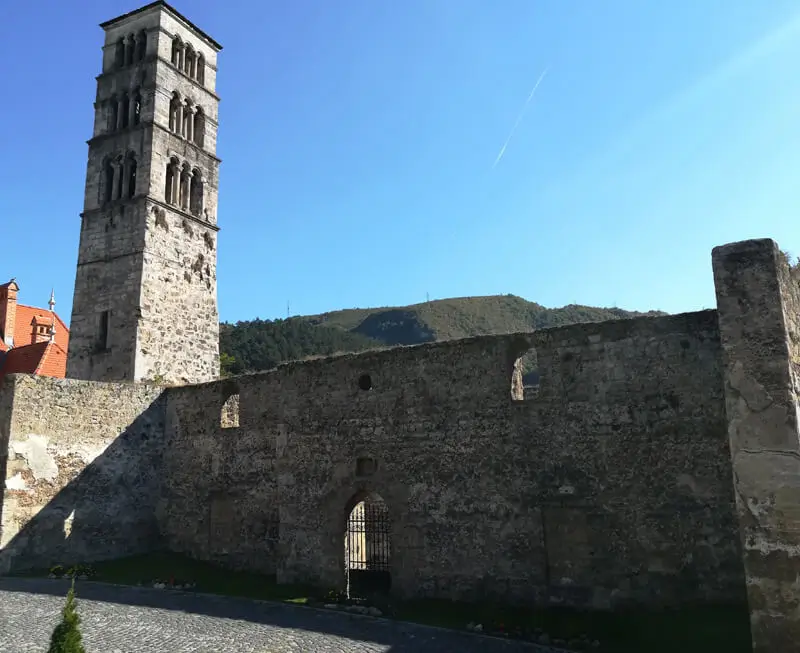Northern Bosnia – Tourist destination
Places to visit
Jajce
Jajce is a town and municipality located in Central Bosnia Canton of the Federation of Bosnia and Herzegovina, an entity of Bosnia and Herzegovina. As of 2013, it has a population of 30,758 inhabitants. It is situated in the region of Bosanska Krajina, on the crossroads between Banja Luka, Mrkonjic Grad and Donji Vakuf, on the confluence of the rivers Pliva and Vrbas. On the way to Jajce, Travnik is always included as a visiting destination.
Jajce was first built in the 14th century and served as the capital of the independent Kingdom of Bosnia during its time. The first references to the name of Jajce in written sources is from the year 1396, but the fortress had already existed by then. The town has gates as fortifications, as well as a castle with walls which lead to the various gates around the town. About 10–20 kilometers from Jajce lies the Komotin Castle and town area which is older but smaller than Jajce. It is believed the town of Jajce was established after Komotin was struck by Black Death. Jajce was the residence of the last Bosnian king Stjepan Tomasevic, where he was slain.
The Ottomans besieged the town and executed Tomasevic, but held it only for six months. At this point it was Hungarians who looked to seize the opportunity to accomplish long-desired goal of capturing Bosnian realm. With the Bosnian King’s death opportunity opened for Hungarian King Matthias Corvinus to try and capture Bosnia before Ottomans, which consequentially lead to Siege of Jajce and suppression of Ottoman forces advancement. This derailed Ottoman plans for nearly half of century, for which time Hungarians established the Banovina of Jajce. Before her death in 1478 Queen Catherine restored the Saint Mary’s Church in Jajce, today the oldest church in town.
The town is famous for its beautiful 22-metre (72 ft) high waterfall where the Pliva River meets the river Vrbas. It was damaged during the Bosnian war, by high waters and severe flooding, as the area of Jajce Hydroelectric Power Station intake was at the battlefront and out of service, sudden rise in water-level and discharge created tidal wave which damaged travertine body of the waterfall. Fortunately waterfall is still here and you can visit it during your Jajce tour and enjoy it’s beauties. very close from Jajce town there is also a Pliva Lake with small Watermills which today become one of the most famous Bosnian landmarks. You can visit Jajce and Travnik and book the tour here.
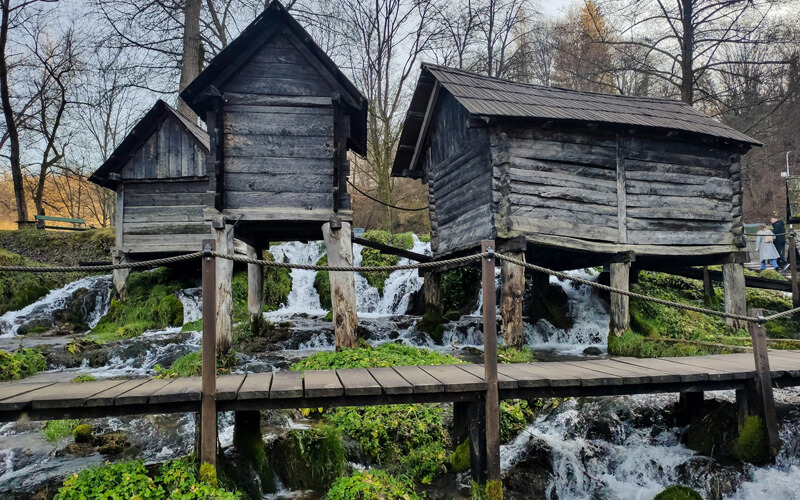
Travnik
Travnik is a town and municipality and the administrative center of Central Bosnia Canton of the Federation of Bosnia and Herzegovina, an entity of Bosnia and Herzegovina. It is situated in central Bosnia and Herzegovina, 90 kilometers (56 miles) west of Sarajevo. As of 2013, town had a population of 16,534 inhabitants, while the municipality had 53,482 inhabitants.
Historically, it was the capital city of the governors of Bosnia from 1699 to 1850, and has a cultural heritage dating from that period. In the Middle Ages the Travnik area was known as the Lasva province of the medieval Bosnian Kingdom. The area is first mentioned by Bela IV of Hungary in 1244. Travnik itself was one of a number of fortified towns in the region, with its fortress Kastel becoming today’s old town sector. The city itself is first mentioned by the Ottomans during their conquest of nearby Jajce.
After the Ottoman conquest of Bosnia in the 15th century, much of the local population converted to Islam. The city quickly grew into one of the more important settlements in the region, as authorities constructed mosques, marketplaces, and various infrastructure. During 1699 when Sarajevo was set afire by soldiers of Field-Marshal Prince Eugene of Savoy, Travnik became the capital of the Ottoman province of Bosnia and residence of the Bosnian viziers. The city became an important center of government in the whole Western frontier of the empire, and consulates were established by the governments of France and Austria-Hungary.
One of the most popular tours in our country it’s also including Travnik tour and visiting Travnik fortress with a museum inside.
Bihac
Bihac, town, northwestern Bosnia and Herzegovina, located on the banks of the Una River. First mentioned in 1260 as the site of an abbey, it was occupied by the Ottoman Empire and became part of Bosnia in 1878. In 1942 the Bihac Republic became briefly a free territory. During World War II Bihac was also the headquarters of the general staff of the National Army of Liberation and the site of the first session of the war parliament of Yugoslavia (AVNOJ, or Anti-Fascist Council of National Liberation of Yugoslavia) in November 1942. The town remained an important meeting place throughout the war. Bihac was the scene of heavy fighting between Bosnian government forces and Serbian militias following Bosnia’s secession from Yugoslavia in 1992.
The modern economic activities of Bihac revolve around the timber and textile industries. It is a rail and market center and has a hydroelectric plant. Population is (2003 est.) 39,000. The most famous attractions of Bihac is Una National Park with it’s beautiful waterfalls. If you decide to go on Bihac tour, you can’t miss to see Strbacki Buk falls and enjoy beautiful Una National Park tour.
Tesanj
The present name of the city was mentioned for the first time in 1461 in a charter from King Stephen Tomasevic to his uncle Radivoj. The charter stated that King Stephen Tomasevic grants him, among other possessions “i na Usori grad Tešanj — the city of Tešanj, in the Usora region”.
Between the second half of the 15th century and the first half of the 16th century, the history of Tesanj was rather chaotic. Since Bosnia was considered a buffer state by the Ottomans, it changed rulers quite often, alternating between Ottoman and Hungarian occupation. Between 1463 and 1476 Tešanj was the center of the Bosnian kingdom and the residence of Duke Radivoj Kotromanić.
Tešanj castle
The foundation of this fortification was started even before the Romans conquered the region. Exact dates are unknown. It was later enhanced by the Romans, Slavs and the Ottoman forces. It has been primarily a defensive fortification. Tešanj Castle is one of the most significant and biggest castles in Bosnia, with the area of some 6,296 square metres. During the Ottoman period, the castle had a permanent army. Tesanj tour is also one of many Invicta Travel unique tours. We call it Bosnian Age of Kings, it also includes a visit a Vranduk tour, just to have more clear image of the Bosnian rich medieval history.
Vranduk castle
The fort Vranduk is located approximately 14 kilometers downstream from the town of Zenica. It was built on a rock above the gorge beneath which the river Bosnia, with its round-arched stream, builds a natural decoration and protection. In the Middle Ages Vranduk was one of several royal cities, where the seat of the Bosnian King Stjepan Ostoja was, and some time later also of the last Bosnian king Stjepan Tomas, as well as his opponent Radivoje. The first mention of Vranduk dates from the 11th of March 1410, in the appeal of Dubrovnik citizens sent to the Hungarian King Sigismund about the behavior of his soldiers. In the period of Ottoman Turkish rule the fortress hid dark memories while it served as a political prison, where many of the persecuted died mostly qadi and mufti. In 1697 during the disastrous campaign of Eugene of Savoy, when almost the whole of Bosnia was left in ashes and smoke, the Vranduk fort was the only unconquered fortification.
The town and fortress Vranduk for centuries resisted all sorts of enemies, disasters, whether human or natural, but it almost always skillfully persisted living up to it s name as the ‘Gate of Bosnia’. And the name in itself – Vranduk, which is assumed to be derived from the word branduk (to defend), speaks about the role that it played in the history of Bosnia.
The town Vranduk – the medieval fortress with a mosque was declared a national monument.You will have a chance to go on Vranduk tour and to see this small but very unique fotress, as a witness of Bosnian turbulent history.
Banja Luka
Banja Luka is the second largest city of Bosnia and Herzegovina and the de facto capital of the Republika Srpska entity. Traditionally, it has been the center of the Bosanska Krajina region, located in the northwestern part of the country. According to the 2013 census, Banja Luka city territory has 274,914 inhabitants.
It is home of the University of Banja Luka as well as numerous state and entity institutions of Bosnia and Herzegovina. The city lies on the river Vrbas and is well known in the countries of the former Yugoslavia for being full of tree-lined avenues, boulevards, gardens and parks. The history of inhabitation of the area of Banja Luka dates back to ancient times. There is a substantial evidence of the Roman presence in the region during the first few centuries A.D., including an old fort “Kastel” (Latin: Castra) in the center of the city. The area of Banja Luka was entirely in the kingdom of Illyria and then a part of the Roman province of Illyricum, which split into provinces of Pannonia and Dalmatia of which Castra became a part. Ancient Illyrian maps call the settlement in Banja Luka’s present day location as Ad Ladios, a settlement located on the river Vrbas.
Banja Luka fell to the Ottomans in 1527. It became the seat of the Sanjak of Bosnia some time prior to 1554, until 1580 when the Bosnia Eyalet was established. Bosnian beylerbeys were seated in Banja Luka until 1639. Ferhad Pasha Sokolović, a relative of Grand Vizier Mehmed-pasha Sokolovic, had upon his return to Bosnia in 1574, begun the building of over 200 buildings ranging from artisan and sales shops to wheat warehouses, baths and mosques. Among more important commissions were the Ferhadija and Arnaudija mosques during which construction a plumbing infrastructure was laid that served surrounding residential areas. This stimulated the economic and urban development of Banja Luka, which soon became one of the leading commercial and political centers in Bosnia. It was also sanjak center in Bosna Eyalet. In 1688, the city was burned down by the Austrian army, but it quickly recovered. Later periodic intrusions by the Austrian army stimulated military developments in Banja Luka, which made it into a strategic military center. Orthodox churches and monasteries near Banja Luka were built in the 19th century. Also, Sephardic Jews and Trappists migrated to the city in the 19th century and contributed to the early industrialisation of the region by building mills, breweries, brick factories, textile factories and other important structures
On 26 and 27 October 1969, two devastating earthquakes (6.0 and 6.4 on the Richter scale) damaged many buildings in Banja Luka. Around 20 to 23 people were killed, and over a thousand injured. A large building called Titanik in the centre of the town was razed to the ground, and the area was later turned into a central public square. With contributions from all over Yugoslavia, Banja Luka was repaired and rebuilt. That was a period when a large Serb population moved to the city from the surrounding villages, and from more distant areas in Herzegovina.
Banja Luka also has a fortress which the locals like to call ,,Kastel”. Kastel is one of the most famous attractions fo Banja Luka, so your Banja Luka tour without seeing this beautiful place wouldn’t be complete.
Una National Park
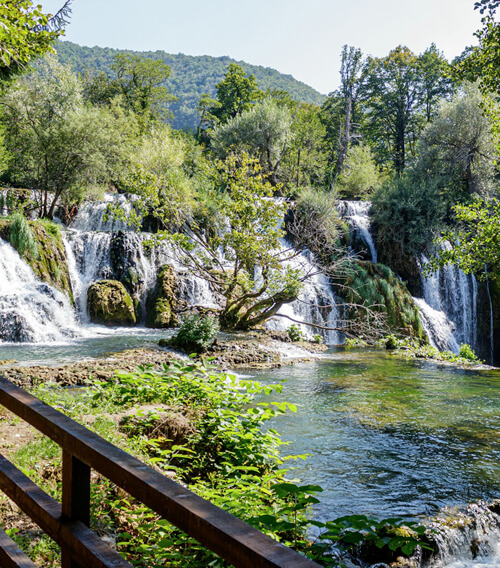
Una National Park (Bosnian: Nacionalni park Una) was established in 2008 (29/05/08) around the Upper Una River and the Unac River. It is Bosnia and Herzegovina’s most recently established national park. The main purpose of the park is to protect the unspoiled Una and Unac rivers which run through it. Protection zone of the National Park stretches on the western side from the source of the Krka river and its course to the confluence with the Una on the state border of Bosnia and Herzegovina with Croatia from where park border follows the Una and state border to the town of Martin Brod and confluence with the Unac. On the eastern side border of the park goes from the entrance of the Unac River into its canyon, few kilometers downstream from town of Drvar, and follows the Unac and its canyon all the way to the confluence with the Una in town of Martin Brod. From there park border follows the Una on the right and state border between Bosnia and Herzegovina and Croatia on the left, until it reach a small town of Ripac, few kilometers upstream from town of Bihac.
The Una’s waterfalls and white water rapids highlight the park. The most famous waterfalls are those at Martin Brod, where the popular “International Una Regatta” kayaking competition begins, and Strbacki Buk further downstream. Throughout the park, visitors can enjoy prime conditions for rafting, fishing, cycling, hiking, and camping. Jumping from the city bridges in Bihac and Bosanska Krupa is also popular. Largest waterfall on the Una river is Strbacki Buk, and is one of the main feature in the Park. If you choose the Una National Park tour, you will not regret, also you can plan your daily trip to Croatia and continue to Plitvice Lakes.
SHORT HISTORY OF NORTHERN BOSNIA:
The northwest part of Bosnia is called Bosanska Krajina and holds the cities of Banja Luka, Prijedor, Sanski Most, Jajce, Travnik, Cazin, Velika Kladuša and Bihac.
Kozara National Park and Mrakovica World War II monument is located in this region.
If you are traveling to the north Bosnia you can visit amazing Jajce, Travnik, Tesanj, Vranduk, Bihac, Banja Luka, Una and National Park of Una.
All of these amazing places have their own story to tell and are worth visiting.
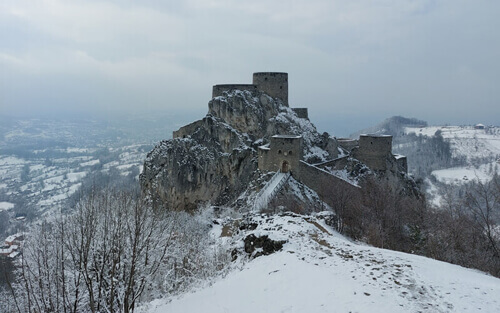
Subscribe to our newsletter!
Enter your email address and we will send you regular emails about all new activities, new tourist trips and promotional discounts.
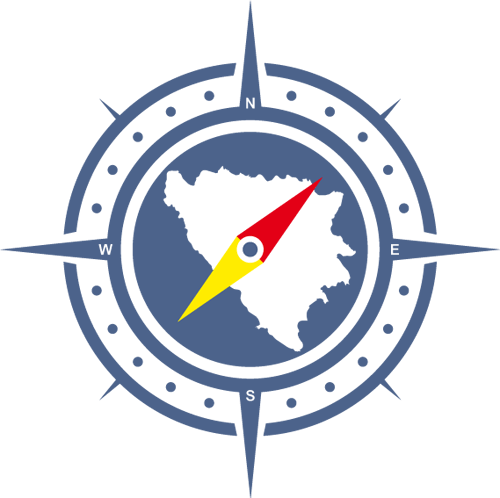
Bosnia and Herzegovina
Bosnia and Hercegovina which has been populated for more inhabited centuries is the heart-shaped land that lies in the heart of southeast Europe. It is here that eastern and western civilizations met, sometimes clashed, but more often enriched and reinforced each other throughout its long and fascinating history. Culture through the centuries can be visited today as a living museum through the architecture, traditional dress, stone carvings, pottery and jewelry, and sacral places.
There are many fascinating destinations throughout Bosnia and Herzegovina for every type of tourist. In Bosnia and Herzegovina, one gets the best of both worlds. Here, the most interesting and attractive sites are a wonderful mix of this tiny country’s cultural and natural heritage. It is almost impossible to separate them, for it is from this pristine nature that its cultures and traditions evolved.
Explore with us the somewhat forgotten country of Southeast Europe, its history, its peoples and customs, experience its untouched nature – entrust us with the organization of your vacation and discover the undiscovered.
© 2024 – Otkrij Tours ISU d.o.o.
© 2024 – Otkrij Tours ISU d.o.o.

